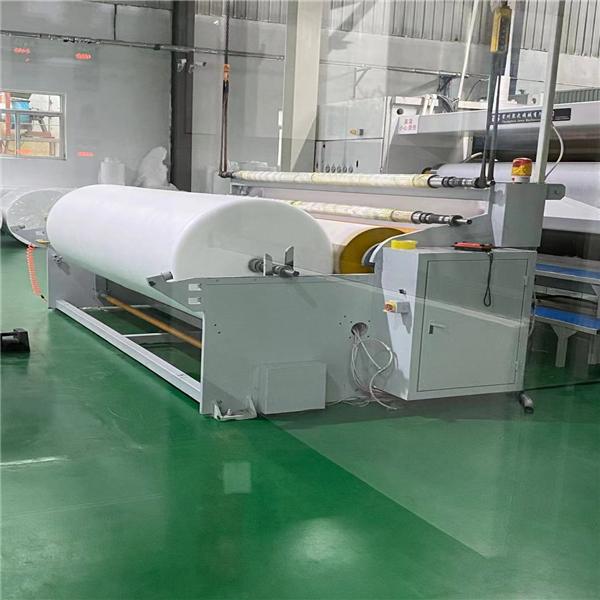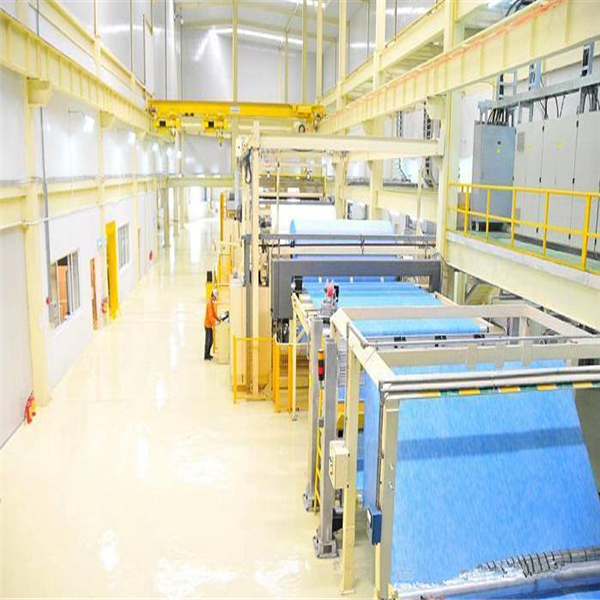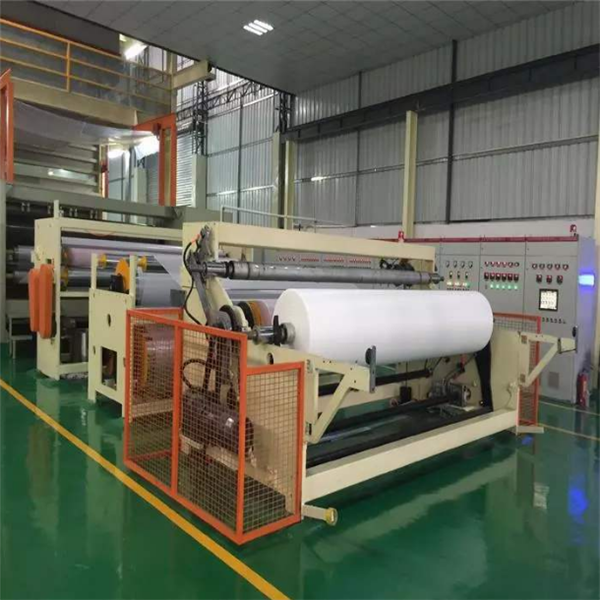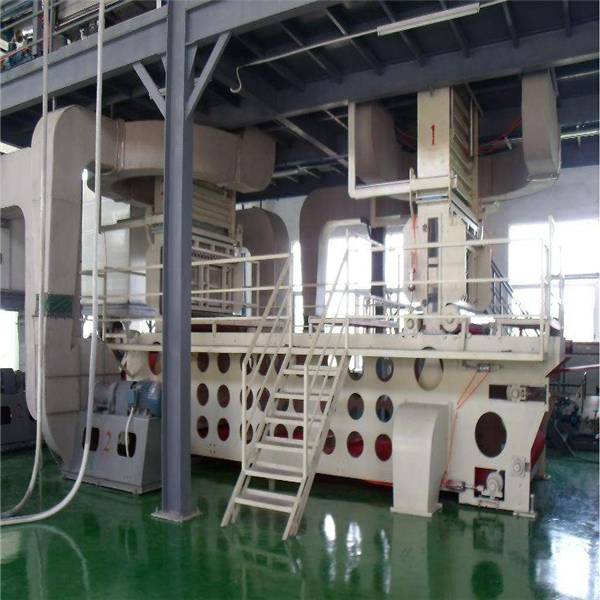At the beginning of 2020, the sudden new crown pneumonia epidemic has had a major impact on the normal operation of the global economy and society, and it has also brought tremendous pressure on my country’s economic development. The production and operation activities of enterprises were once severely impacted, and the main economic indicators of the textile machinery industry fell sharply in the first quarter. Since the second quarter, under the national plan to promote epidemic prevention and control and economic and social development, my country’s economic development has gradually recovered, the production and operation order of the textile machinery industry has gradually returned to normal, and the decline in industry economic operation indicators has narrowed significantly compared with the first quarter, and exports have been compared with the same period last year. Slightly down. However, the impact of the epidemic still exists, and the production and operation of the industry still face greater pressure.
Operational quality and efficiency


According to statistics from the National Bureau of Statistics, from January to June 2020, 636 textile machinery enterprises above designated size achieved operating income of 32.137 billion yuan, a decrease of 17.02% compared with the same period last year, and the growth rate decreased by 16.23 percentage points from the same period last year. The decline narrowed. The total assets are 102.256 billion yuan, an increase of 12.82% compared with the same period last year. The decline in operating income in the second quarter narrowed by 19.88 percentage points compared with the first quarter. The total realized profit was 2.119 billion yuan, a decrease of 24.86% compared with the same period last year, and the rate of decline was 42.48% narrower than the first quarter of this year. The operating income margin was 6.59%, a decrease of 0.38% compared with the same period last year. The industry’s profitability is still under great pressure. The loss of loss-making enterprises was 434 million yuan, an increase of 112.16% compared with the same period last year; the loss area was 33.19%, an increase of 14.21 percentage points compared with the same period last year.
From January to June 2020, the total cost of textile machinery enterprises above designated size was 29.404 billion yuan, a decrease of 30.53% compared with the same period last year.
Investigation of key enterprises
In 2020, the Textile Machinery Association conducted a survey on the operating conditions of 108 key textile machinery enterprises in the first half of 2020. From the summary results, in the first half of the year, 67% of enterprises’ operating income experienced varying degrees of decline, the prices of textile machinery products were generally stable with a decline, and corporate inventories increased. 50% of enterprises believe that the main problems they face are insufficient domestic and foreign markets, blocked sales channels, and cancellation of original orders. Regarding the situation of the textile machinery industry in the third quarter of 2020, 49.53% of the surveyed companies think it is not optimistic.
Import and export situation
According to customs statistics, the cumulative total of my country’s textile machinery imports and exports from January to June 2020 was US$3.282 billion, a decrease of 8.76% compared with the same period last year. Among them: textile machinery imports were 1.393 billion US dollars, a decrease of 18.43% compared with the same period last year; exports were 1.889 billion US dollars, a decrease of 0.03% compared with the same period last year, which was basically the same.
Import situation of textile machinery industry
From January to June 2020, textile machinery was imported from 53 countries and regions, with a total import value of US$1.393 billion, a year-on-year decrease of 18.43%.
From the perspective of imported product categories, chemical fiber machinery imports ranked first, with a total import volume of US$543 million, an increase of 18.51% compared with the same period last year, accounting for 38.99% of the total imports; the seven categories of products are different except for chemical fiber machinery. The degree has dropped drastically.
Export situation of textile machinery industry
From January to June 2020, a total of US$1.889 billion of textile machinery was exported to 169 countries and regions, a decrease of 0.03% compared to the same period last year. Driven by the export of epidemic prevention textile production equipment, the total export of textile machinery has basically recovered to the level of the same period last year. .
In terms of export categories, the export value of non-woven machinery (including anti-epidemic textile production equipment) was US$547 million, an increase of 604.92% compared with last year, accounting for 28.95%, ranking first, followed by printing and dyeing and finishing machinery. , Knitting machinery, auxiliary devices and spare parts, weaving machinery, spinning machinery, chemical fiber machinery.
Each sub-industry situation
Spinning machinery
Affected by the epidemic at home and abroad, market demand is sluggish, new and technological transformation projects are few, and the demand for equipment and equipment has dropped sharply. The production and sales of many equipment companies in the first quarter mainly continued last year’s orders, and the task volume in the second quarter was obviously insufficient. The sales of cotton spinning frames decreased by 61.7% year-on-year, of which the sales of long cars (with collective doffing devices) accounted for 77.8% of the total spinning frames; the sales volume of rotor spinning decreased by 31.6% year-on-year. In addition to the spread of foreign epidemics, import and export logistics In addition to the difficulty of personnel mobility, the sales of spinning machinery, including imports and exports, have seen a significant decline. Among the imported equipment, only the air-jet vortex spinning equipment is still growing, indicating that the domestic investment enthusiasm for air-jet vortex spinning continues. It is expected that the market demand for spinning equipment will not show any signs of improvement in the third quarter, and the shortage of orders will continue.
Weaving machinery
In the first half of 2020, with the effective control of the domestic new crown pneumonia epidemic, the domestic market is gradually picking up. The production capacity utilization rate of weaving machinery enterprises has gradually recovered, and the supply capacity and industrial chain have continued to improve. Sales orders of weaving machinery companies in the first quarter are in the order repair stage after the domestic epidemic. However, since April, with the outbreak of foreign epidemics, the Sino-US trade war, and the escalation of Sino-Indian frictions, production has slowed down significantly, but production and sales have been slowed down. The sales volume of weaving machinery was gradually concentrated in the leading enterprises. According to the statistics of the association, the sales volume of high-speed rapier looms in the first half of 2020 decreased by 6.9% year-on-year, the sales volume of water jet looms decreased by 26.3% year-on-year, and the sales volume of air-jet looms decreased year-on-year. Reduced by 2.7%. It is expected that in the third quarter of 2020, with the gradual relief of the epidemic, the end consumer market’s demand for clothing and industrial cloth purchases will gradually rise, and the sales of rapier looms are expected to gradually increase; the decline in sales of filament fabrics and home textiles will continue to narrow, and water spray Sales of looms are gradually picking up; as domestic weaving machinery upgrades continue, sales of air-jet looms are expected to maintain a stable operation. At the same time, weaving machinery companies should pay attention to corporate cash flow, pay attention to the multi-level domestic consumer market and the international environment and other factors.
Knitting machinery
In the first half of 2020, affected by the new crown epidemic, the overall operation of the three categories of knitting machinery, flat knitting machines, circular knitting machines, and warp knitting machines has been greatly affected. In the first half of the year, the production and sales volume of the flat knitting machine market saw a significant decline, down by about 70%. On the one hand, the impact of the new crown epidemic has caused a sharp drop in orders in downstream markets and insufficient demand for flat knitting machines. At the same time, the outbreak of the global epidemic has caused some orders in overseas markets to be delayed or cancelled, and new orders have dropped sharply; on the other hand, domestic traditional sweaters and shoe uppers The flat knitting machine market is becoming saturated, and the output is difficult to increase. The circular knitting machine industry showed a downward trend in the first half of the year, with a decrease of about 20%. Affected by the new crown epidemic, in the first quarter, circular knitting companies mainly concentrated on orders before production, and overall sales declined. In the second quarter, with the development of domestic epidemic prevention and control, the circular knitting machine market gradually recovered, and the fine gauge and jacquard machines performed outstandingly. At the same time, the impact of overseas epidemics and geopolitical factors has also affected the overseas market of circular knitting machines to a certain extent, and the performance of the Indian market is more obvious. The warp knitting machine industry continued its downward trend as a whole in the first half of the year, and some segmented machine types showed signs of recovery. Affected by the downstream market, the lace machine market continued its sluggish performance in the past, and sales volume and sales value continued to decline. After a short period of recovery in the high-speed warp knitting machine market, production and sales have declined. Double-needle-bar warp knitting machines benefited from the wide application of its products, and sales volume increased steadily. Among them, velvet, warp knitting shoe upper materials and other products showed bright spots. Multi-axial warp knitting machines benefited from the resumption of production and production of infrastructure projects in various regions, and the downstream market Demand has increased, the situation is improving, and sales have increased year-on-year. According to statistics from the Association, sales of warp knitting machines fell by 5% year-on-year.
Dyeing and finishing machinery
From January to June 2020, due to the impact of the epidemic, major domestic pre-processing equipment manufacturers have delayed delivery dates, and foreign trade orders have dropped significantly. Companies are actively expanding the domestic market, making competition more intense. Overall sales in the first half of the year were basically the same as last year, but sales declined. Since 2020, export orders for downstream printing and dyeing factories have plummeted due to the epidemic, and domestic demand is insufficient, so they have become conservative in investing in updating equipment. In the first half of the year, printing and dyeing machinery enterprises were greatly affected by the epidemic, and sales volume fell more than that of the same period last year. Most equipment fell by about 30%, and exports fell even more. Most companies’ orders in the first half of the year came from before the epidemic, and there were fewer new orders in the first half of the year. However, many companies took advantage of the off-season in the first half of the year to settle down and use new technologies to create new opportunities and become a bright spot in the printing and dyeing machinery industry. As the export situation improves in the second half of the year, companies are actively expanding the domestic market while also seeking foreign trade orders. According to the feedback from the association’s sample questionnaire survey, companies’ expectations for the second half of the year are generally better than those of the first half of the year.
Chemical Fiber Machinery
In the first half of 2020, chemical fiber spinning machines increased slightly, up 17.54% year-on-year, and new projects by leading companies accounted for about 85% of domestic new capacity. Affected by the new crown pneumonia epidemic and the continued deterioration of Sino-US relations, the export of chemical fiber products has declined significantly. With chemical fiber factories integrating production capacity, reducing inventory, and industrial transformation and upgrading, it is expected that new projects will be suspended or terminated in the second half of the year. The new fixed asset market for polyester staple fiber will basically be stagnant in the first half of the year. The growth rate of chemical fiber machinery orders is expected in the second half of the year. slow. In addition, special fibers such as green fibers and differentiated fibers, and functional fiber production equipment are the development trends of small and medium-sized enterprises in recent years.
Nonwovens machinery
In the first half of 2020, the production and sales of nonwovens machinery continued to increase explosively. As the key material of masks, melt blown cloth and other materials are in short supply. In addition to the R&D and production of non-woven machinery companies, other industries, including chemical fiber machinery and plastic machinery, have also switched production and expanded production. According to the statistics of key enterprises by the Textile Machinery Association, the sales volume of spunbond, meltblown and spunmelt composite nonwoven production lines in the first half of this year increased by about 265.85% compared to the first quarter of this year; used as a key raw material for disinfection and wipes. As well as alternative materials for spunbond fabrics for face masks, the spunlace nonwoven production line has also increased significantly compared with the same period last year.
Generally speaking, the new orders of non-woven machinery companies are very optimistic. Some companies have foreign orders in the third quarter. However, attention should be paid to the quality assurance issues after the production line is delivered to form a virtuous circle.
At present, the epidemic situation in various parts of the world is still developing. Countries generally regard personal protective equipment (PPE) such as masks and protective clothing as strategic reserve materials, and purchase relevant non-woven equipment through government financial support and other means to build production bases. Although the competitiveness of my country’s nonwovens equipment in Europe, America, Australia and other places cannot match that of leading European companies such as Reifen and Oerlikon, it still has good market potential in Latin America, Africa, Central Asia, South Asia, Southeast Asia and other regions. It is recommended that industry enterprises pay sufficient attention.
Industry outlook
In the second half of the year, the economic operation pressure of the textile machinery industry remains relatively high. The international economic and trade situation has become increasingly severe and complex. The global economy has suffered bilateral shocks from supply and demand, and has slipped into a recession in the short term. Countries have unevenly responded to the epidemic, and the global economy is facing great uncertainty. According to the latest forecasts of the IMF and the World Bank, the global GDP growth rate will decline to -5% in 2020. my country’s economy is gradually recovering, but the main indicators such as GDP, consumption, investment, and exports in the first half of the year are still in a declining area, and the impact of the epidemic still needs to be made up. The economic operation of my country’s textile industry has gradually risen under pressure, and the production order has gradually improved. However, enterprise investment and development confidence are still insufficient, and market demand has not yet fully recovered. In addition, according to a survey report issued by the International Textile Federation (ITMF) in June this year, affected by the epidemic, the turnover of major textile companies in the world is expected to drop by an average of 32% in 2020. Most textile companies are expected to only be possible after the first and second quarters of 2021. Returning to the pre-crisis level, the epidemic has also prompted companies to pay more attention to the importance of local/regional supply chains, which may change the current global textile supply chain pattern. The adjustment of the domestic and foreign markets of textile machinery is still accelerating. The adjustment of the market has brought a continuous impact on the operation of textile machinery enterprises. A new round of industry reshuffle is inevitable. Affected by the epidemic, although the overall market size is shrinking and competition The situation is more intense, but the leading companies in the segmented industries have more prominent competitive advantages.
Post time: Jul-19-2021


